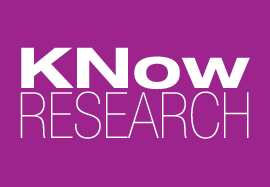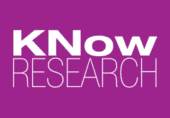There’s More to Market Research than Data Collection
Tiffany Huang has been KNow Research’s intern during the fall semester of 2021, while completing her BA in Communication & Media Studies at UC Berkeley.
Before interning at KNow Research, I had little to no knowledge of what the market research and consumer insights industry was all about. I’d always assumed it was an extremely data-driven field, which, if I had to be honest, intimidated me. However, my initial impression of the field soon changed after joining the women-led team at KNow. While collecting data is certainly crucial to the field, there is a lot more to market research than just that.
Here are 3 key insights I’ve picked up from working with such intelligent women in research:
1. Being flexible is essential
One of the first things that Katrina, the President at KNow, mentioned to me was that it’s very common to go from Plan A to Plan B, to Plan C, and so on until things work out. I did not realize how serious she was until I experienced in-person fieldwork. There, I realized how hectic fieldwork can really get!
While we may have been able to plan everything out on our part, from when we would begin and end our research, to what questions we would ask, and how many participants we aim to interview for the day, our schedule doesn’t often go as planned. I’ve learned that unanticipated problems come up more often than not, so it’s important to adjust our schedules and strategies accordingly.
2. Conversational flow is key
A major responsibility of being a researcher is collecting data, and interviewing participants is a crucial part of that process. I noticed that many interviews with the best data were the ones where both the researcher and the participant felt comfortable. It’s important that researchers set an environment that is welcoming and enjoyable, not intimidating the participants, and encouraging them to speak candidly about their experience.
Even though we set our questions in a specific order, researchers don’t follow the guide in any strict way. Instead, it acts as a reminder of what we need to ask. Researchers allow the conversation to take its own course while making sure to ask all the necessary questions in a natural way. This method brings out a perfect balance of getting the participants comfortable with being interviewed and encouraging expressive responses that are helpful to the research.
3. Follow up as needed
While all interviews are helpful to the research being conducted, some participants require a bit more probing than others to get a detailed answer, and that’s completely fine! Under these circumstances, researchers take it upon themselves to ask more clarifying questions without leading the participant’s response. This is just as important as maintaining a natural conversation to the interview, and it certainly takes practice to nail it down.
The past three months as a market research Intern have been fun, especially at KNow Research. I gained more hands-on experience during my time here than any of the other internships that I’ve had in the past, which I’m extremely grateful for. From assisting the researchers in conducting interviews, to putting together video playlists, I felt like I was an integral part of the team and that the work I produced made an impact.
As a senior in college, I am thinking about career paths that I would like to pursue in the near future. My experience here has been so positively impactful that I am genuinely interested in pursuing a career in market research! I’m grateful to learn from so many wonderful women in research who trusted me and gave me several opportunities to take on different projects that were crucial to their reporting.

